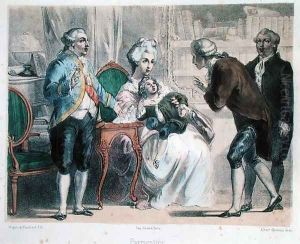Albert Chereau Paintings
Albert Chereau, born in 1831, was a French lithographer and painter associated with the 19th century. His work is less well-documented than some of his contemporaries, which can make comprehensive details about his life and career somewhat scarce. However, he is known to have contributed to the rich tradition of European printmaking and to have been active during a period when lithography was gaining popularity as a medium for both artistic expression and commercial reproduction.
Chereau's works often included landscapes, portraits, and genre scenes. As a lithographer, he would have been skilled in the complex process of printing using a lithographic stone or a metal plate, a technique invented at the end of the 18th century that allowed for the mass production of images. During the 19th century, lithography became a popular method for reproducing artworks, which could be distributed more widely to the public.
Albert Chereau lived during a time of significant artistic movements, including Romanticism, Realism, and the beginnings of Impressionism. While it is not clear which specific movement Chereau was most closely aligned with, his works would have reflected the broader trends of the time, including an interest in naturalism, the exploration of light, and perhaps social commentary through his genre scenes.
Unfortunately, details about Chereau’s personal life, training, and the extent of his oeuvre are not readily available, which is not uncommon for artists of the period who did not achieve the same level of fame as their peers. After contributing to the artistic scene of the 19th century, Albert Chereau passed away in 1906. Today, his works may be found in private collections and occasionally appear at auctions or in exhibitions focused on the period's printmaking and lithography.
